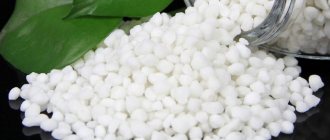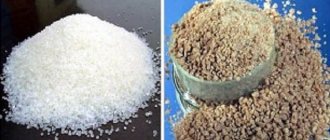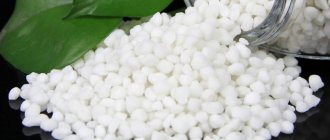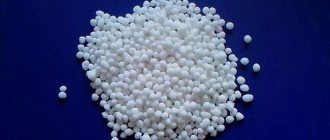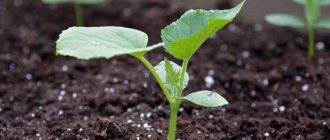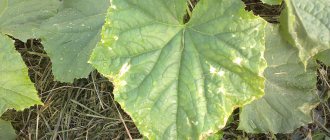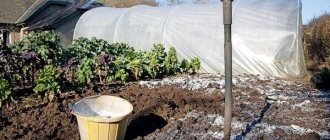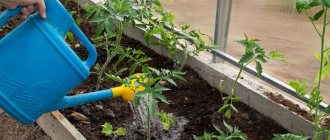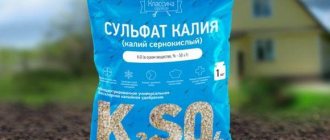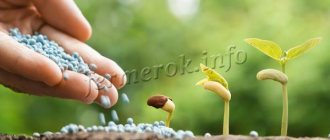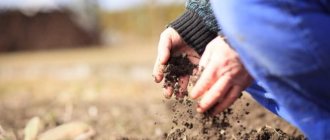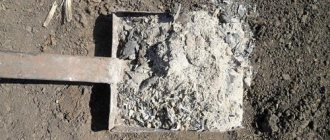Plants in the garden, vegetable garden, and flower garden need various fertilizers, among which calcium nitrate is not the least important. In retail chains it can most often be bought under the name “Fertika”, less often - “Calcium nitrate”.
We will tell you what is remarkable about this fertilizer, what its composition is, method of application and storage rules. We will also talk about the features of application on different crops.
Calcium nitrate - what is it?
Calcium nitrate, also known as calcium nitrate or calcium nitrate, is an alkaline mineral fertilizer of chemical origin. Calcium in this form is best absorbed by plants, especially if they are grown in acidic soils. The properties of calcium nitrate are fully revealed on wood-podzolic soil.
Calcium nitrate is produced in the form of powder or granules, highly soluble in water. Chemical formula of the fertilizer: Ca (NO3)2. The detailed composition can be found in the table.
| Substance | Quantity (%) |
| Calcium | 19 |
| Nitrogen | 13–16 |
| Bor | 0,3 |
Calcium nitrate can be used on all soils and to fertilize most crops. Farmers often buy calcium nitrate in the form of granules: they dissolve faster in water and do not generate dust.
The packaging of calcium nitrate depends on it, usually packaged in small bags weighing 1 kg. If the drug is from, then the packaging can be 20 g, 25 g, and 1 kg. Some manufacturers package fertilizer in 30 and 50 kg bags.
The nitrogen contained in the fertilizer can accumulate in plants in the form of nitrates. Therefore, the dosage must be strictly observed.
External signs of micronutrient deficiency in plants
The use of magnesium sulfate is justified for the following symptoms in plants:
- interveinal chlorosis, when the leaves are covered with a marbled pattern, that is, the production of chlorophyll has decreased to external manifestations;
- the edges of the leaves change color from green to brown and dry out;
- falling leaves - critical lack of magnesium;
- the fruits do not ripen, since the plant cannot absorb the nutrients necessary for this, in particular potassium.
Video: Treatment of garlic with magnesium sulfate against interveinal chlorosis
Sulfur deficiency in plants is expressed in the following symptoms:
- foliage changes color from green to yellow;
- the process begins with old leaves and gradually moves to young ones;
- slow growth;
- the veins remain green, while the leaf itself becomes discolored.
Do not overly flood the root system of plants when watering. In conditions of lack of oxygen (flooding), sulfur turns into hydrogen sulfide, which is extremely dangerous for the root. In such situations, the plant quickly dies
Sulfur deficiency greatly affects the activity of soil bacteria, which process nutrients and their availability to plants depends primarily on the number of microorganisms in the soil. The amount of sulfur in the soil should be from 10 to 15 kg per hectare for full growth and development of plants.
Features of fertilization
Calcium nitrate from any manufacturer can be applied to the soil in the spring, and also used as a systematic fertilizer in the summer. At this time of year, fertilizer solutions are used for root and foliar feeding.
Calcium nitrate should not be applied in the fall, during plowing or digging. In this case, the fertilizer will decompose over the winter, releasing nitrogen. Calcium without it will not be absorbed by plants, so there will be no benefit from this approach.
The easiest way to measure fertilizer is with spoons. A tablespoon contains approximately 20 g of calcium nitrate, a teaspoon contains 6–8 g. To prepare solutions of more precise concentrations, it is better to buy electronic scales.
The effect of calcium nitrate
Typically, the most widely used fertilizers in home gardening and vegetable growing are those containing potassium, phosphorus and nitrogen. This is explained by the low need for calcium in plants and its high content in the soil.
However, in depleted areas with an acidic reaction, calcium nitrate, subject to dosage, will show its properties in all its glory. Here gardeners and gardeners note:
- acceleration of ripening of tomatoes and other fruit plants;
- accelerating the development of seedlings planted in open ground;
- increasing the period of fruiting;
- improving the integrity of the fruit shell;
- positive changes in the taste of fruits and berries.
Calcium nitrate stimulates the development of the root system. Therefore, plants are better able to withstand periods of drought and require less water for normal growth and fruiting. At the same time, resistance to prolonged rains and sudden cold snaps increases. Resistance to fungal and bacterial diseases is increasing.
In regions with frequent, prolonged rains, calcium nitrate is recommended to be used as a nitrogen fertilizer.
Ava for strawberry
Long-term fertilizer for strawberries and wild strawberries. Provides acceleration of fruiting, development of a powerful root system, increasing the size of berries and improving their taste, increasing resistance to diseases, pests and adverse weather conditions.
Composition (wt.%), not less:
Phosphorus (P2O5) - 50-54%, Potassium (K2O) - 22-24%, Calcium (CaO) - 8%, Magnesium (MgO) - 3%, Silicon (Si) - 1.5%.
Trace elements: Sulfur (S), Boron (B), Iron (Fe), Manganese (Mn), Cobalt (Co), Molybdenum (Mo), Zinc (Zn), Copper (Cu), Selenium (Se).
Consumption rate : The main fertilizer is to apply 3-5 grams under the bush in the root growth zone. (5g - 1/2 teaspoon). Top dressing - add 3 g to the zone of active root growth.
Interaction with other fertilizers and drugs
Calcium nitrate cannot be applied to the soil simultaneously with pesticides and herbicides. It is also unacceptable to simultaneously liming the soil with lime, which destroys calcium nitrate and makes it unsuitable for absorption by plants.
Fertilizers with which calcium nitrate should not be combined:
- superphosphate;
- other fertilizers with nitrogen;
- growth stimulants.
You cannot use manure and humus at the same time as calcium nitrate; it is better to wait at least a week between these feedings.
The fertilizer combines well with urea and wood ash.
Rules for storing calcium nitrate
It is best to store calcium nitrate in airtight bags and in rooms with low humidity levels. In damp rooms, granules will accumulate moisture, and under its influence, chemical compounds will decompose. As a result, the powder will become unsuitable as a fertilizer.
It is better to prepare solutions for root and foliar feeding immediately before processing. It is not advisable to store leftovers for similar reasons: plants will not be able to absorb substances obtained as a result of the breakdown of the compound under the influence of water.
Nuances of use on different crops
The exact dosage can be found in the instructions for use from the manufacturer - calcium nitrate is available in different versions, with the addition of excipients. You can find approximate dosages and recommendations for use on different crops below.
For cucumbers and tomatoes
Good results are obtained by foliar feeding with a solution of calcium nitrate (2 g/1 l of water). Processing of cucumbers begins with the appearance of the third full leaf until the ovaries form. The interval between spraying is 10 days. This method stimulates plant growth and prevents the development of fungal infections of the stem.
Tomatoes are fed with calcium nitrate 2 weeks after planting them in open ground and before flowering. It is best to apply fertilizer to the ground in the form of a liquid solution or by embedding granules into the soil and then watering it. This feeding stimulates the development of the root system, which is especially important for tomatoes.
For cabbage and potatoes
Calcium nitrate is used when preparing a place for planting cabbage seedlings. To do this, add a teaspoon of powder to each hole, then sprinkle it 2-3 cm with soil so that there is no direct contact with the roots of the young seedlings.
The nutritional value of the soil is important for cabbage; it is better to apply mineral fertilizers immediately before planting the seedlings in open ground. This is why calcium nitrate is not added when digging cabbage beds in the spring: its effectiveness will be several times lower.
Calcium nitrate promotes the growth of potatoes, so on clay soils with an acidic reaction, it is placed in a hole along with ash, then lightly sprinkled with earth. Another option is to apply it to the ground before the first hilling. The dosage in this case should be determined by the instructions for use.
For hot and bell peppers
Peppers often suffer from blossom end rot, a disease caused by a calcium deficiency in the soil. When the first signs of the disease are detected, calcium nitrate (the same Fertik) is added in the form of a 0.2% solution. If necessary, the fertilizer application is repeated after 10 days.
It is important to stop fertilizing after the ovaries form.
For strawberries
It is acceptable to use calcium nitrate to feed strawberries in order to prolong fruiting and improve the taste of the berries. The method of root feeding is used. To do this, 25 g of powder or granules are dissolved in 10 liters of water. Consumption rate - 1 l/sq.m.
You need to fertilize strawberries with calcium nitrate carefully, at the root, so that the solution does not get on the leaves and stems. It is advisable to do this in the evening or early morning. After applying fertilizer, strawberries need to be watered.
Repeated application is permissible immediately after harvesting, but not in the fall. In autumn, calcium nitrate is not used on strawberries.
For fruit trees and shrubs
Fruit trees need fertilizer only when there are signs of calcium deficiency. These include yellowing and deformation of the leaf blade, stunted growth, shedding of ovaries and damage to growth points.
The dosage depends on the crop and its age, usually indicated on the package. The average dosage is 30 g/10 l of water, but it can be adjusted down or up. Foliar feeding is acceptable, but the air temperature should be within 10–15 °C. It is advisable to carry out the treatment before flowering begins.
The consumption rate for shrubs is up to 2 liters per bush, for mature fruit trees (from 5 years old) - 1–1.5 buckets. A third or half of a bucket is poured under the seedlings.
For flowers and ornamental shrubs
Calcium nitrate has a positive effect on all flowering plants, including perennial flowers. With regular and correct use, leaves grow faster and the likelihood of putrefactive processes developing on the stems is reduced. Typically, root feeding is used by dissolving a teaspoon of powder in a liter of water. The consumption rate is 1.5 l/sq.m of flower bed. You can also use foliar feeding by dissolving 2 g of powder in 1 liter of water.
Not all ornamental shrubs need calcium nitrate feeding. You cannot fertilize with this substance:
- any coniferous plants;
- ferns;
- heather;
- hydrangeas;
- azaleas
These plants prefer an acidic environment; alkaline calcium nitrate will have a detrimental effect on them.
Some plants like slightly acidic soil, these include:
- honeysuckle;
- decorative maple;
- viburnum;
- barberry;
- chamomile.
Calcium nitrate can be used for them with caution and only if necessary. The dosage and frequency of treatment should be reduced.
The fertilizer is best suited for phlox, dahlias, lilies, gladioli and clematis.
Fertilizing strawberries in spring
Waking up plants need: phosphorus (for the development of the root system), nitrogen (for increasing the mass of leaves), humates (as general natural stimulants).
Strawberry roots begin to vegetate already at air temperatures from +5 to +8 degrees. After clearing the plantation of last year's leaves, we immediately feed it.
Before unfolding the leaves, it is useful to feed the plants with urea or calcium nitrate (1 tablespoon per bucket of water). Afterwards it will be possible to provide other nutrients needed during this period for the full development of plants.
First feeding options
- infusion of chicken droppings (1:20). In order not to burn the plant, the prepared solution should stand for about three days.;
- infusion of manure (1:10) and 1 tbsp. l. sperphosphate;
- any berry OMU fertilizer (from the Gumi-Omi, Ispolin, Fertika-OMU, Buy fertilizers, etc. series);
- Fertilizer Clean sheet for strawberries according to instructions;
- Ammophos 1 tbsp. l. on a bucket of water;
- 1 tbsp. l. urea and superphosphate (per bucket of water).
My option is Calcium nitrate 10g/10l + plantofol 20-20-20 10g/10l. water, all this stuff from a watering can, one sheet at a time, so that the spine gets wet.
All fertilizing should be carried out strictly after watering , so as not to burn the roots of the plants.
After applying fertilizer, it is advisable to mulch the plantings with sawdust, pine needles, hay or inorganic mulch so that the soil under the bushes is moist. In addition, some mulch helps keep pests and weeds away.
Do not apply a lot of nitrogen fertilizers in pursuit of large berries. Sugar will be lost and the strawberries will become tasteless.
Features of application for seedlings
When growing seedlings, especially in purchased ready-made soil, calcium nitrate is not used. Only in case of signs of calcium deficiency - dying off of growing points, deformation of leaves, curvature of the stem in the shape of a hook, you can use fertilizers for foliar feeding
To do this, plants are sprayed with a solution at a concentration of 0.2% early in the morning or after sunset. To prepare it, 2 g of calcium nitrate is diluted in 1 liter of water.
If there are no signs of calcium deficiency, the seedlings are fertilized with this substance only after planting in open ground after 7–10 days. This technique will stimulate root growth, which means the seedlings will take root faster and begin to develop normally.
Fertilizing seedlings with calcium nitrate is advisable on acidic or severely depleted soils.
Making calcium nitrate with your own hands
If it is impossible to buy calcium nitrate or you want to experiment, you can make it yourself. To do this you will need ammonium nitrate, water and slaked lime.
Method for obtaining calcium nitrate:
- Dissolve 300 g of ammonium nitrate in 0.5 liters of water.
- Pour the solution into a saucepan with a volume of at least 3 liters.
- Boil.
- Gradually add 140 g of slaked lime. It should take at least half an hour to add this volume, and the portions should be very small.
- Keep on fire until the smell of ammonia disappears.
Allow the solution to cool. Lime will fall to the bottom in the form of a dark sediment. Once it all settles, you get a clear solution of calcium nitrate. It is carefully poured into another container so as not to shake it and used for root feeding of plants.
For safety reasons, work outdoors, protect your eyes, respiratory organs and lessons from contact with vapors and substances.
Fertilizing strawberries with ammonia
For the first feeding (in early May) you need 40 ml of ammonia per 10 liters of water. After fertilizing with ammonia, the strawberries need to be watered again with plain water.
The second treatment of strawberries with this product is carried out after flowering. For 10 liters of water take 3 tablespoons of ammonia. First, the strawberries need to be watered with water, then with ammonia solution. Treatment protects plants from pests. If you water the berries, then you need to wash them before using them.
The third treatment is carried out after harvesting. In this way, the bushes are prepared for wintering. The most concentrated solution is used. For 10 liters of water you need 1 bottle of ammonia and 5 drops of iodine. Plants need to be watered abundantly.
